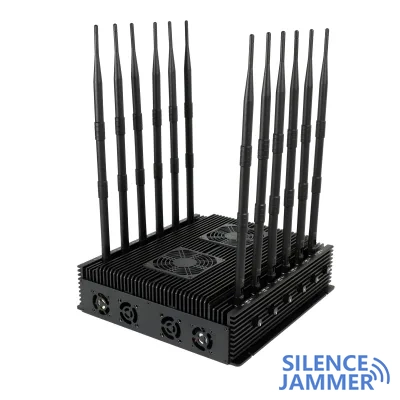
With the rapid development of wireless technology, wireless communications such as Wi-Fi, Bluetooth and mobile phone signals have become an indispensable part of our daily lives. However, the emergence of wireless signal jammers also brings new challenges. These devices block or weaken wireless communications by emitting interference signals and are widely used in various situations that require isolated communications, such as examination rooms, conference rooms, and military areas. This article will delve into the working principle of wireless signal jammers, reveal how they affect wireless communications, and explore their legality and application scenarios.
Basic principles of wireless signal jammers
Wireless signal jammers cover and suppress normal wireless communication signals by emitting strong electromagnetic interference signals in the target frequency band. Its basic principles include the following aspects:
1. Frequency band coverage
Wireless communication devices (such as cell phones, Wi-Fi routers, and Bluetooth devices) typically operate on specific frequency bands, such as cell phone signals in the 900 MHz, 1800 MHz, or 1900 MHz bands, and Wi-Fi signals in the 2.4 GHz and 5 GHz bands. The first step for a jammer is to determine the frequency band in which the target device operates.

2. Transmitting interference signals
The built-in transmitting module of the jammer generates electromagnetic signals with the same or similar frequency as the target frequency band. By emitting these interference signals, the jammer can form strong electromagnetic noise in the target frequency band, covering normal communication signals.
3. Block communication
When the intensity of the interference signal is large enough, the target device (such as a mobile phone or Wi-Fi device) cannot distinguish the normal communication signal from the background noise, resulting in communication interruption or severe slowdown. This phenomenon is similar to having a conversation in a noisy environment. The greater the background noise, the more difficult it is to communicate.
Components of wireless signal jammers
A typical wireless signal jammer mainly consists of the following parts:
1. Signal transmitting module
This is the core component of the jammer, responsible for generating and emitting electromagnetic interference signals. The transmit module can adjust the frequency and intensity as needed to cover different wireless communication frequency bands.
2. Antenna
The antenna is used to transmit the generated interference signal. Different types of antennas, such as omnidirectional and directional antennas, can achieve different coverage areas and directions.
3. Control circuit
The control circuit is used to manage the working status of the jammer, including functions such as starting, stopping, and adjusting transmit power.
4. Power module
The power module provides necessary power supply to various parts of the jammer to ensure its normal operation.
Types of Wireless Signal Jammers
According to different application scenarios and working methods, wireless signal jammers can be divided into the following types:
1. Full-band jammer
This type of jammer covers all common wireless communication frequency bands and is suitable for situations where communication signals need to be completely shielded, such as confidential conference rooms or military facilities.
2. Directional jammer
Directional jammers use directional antennas to concentrate interference signals in specific directions and are suitable for signal shielding in local areas, such as examination rooms or specific rooms.
3. Adjustable frequency jammer
This kind of jammer can adjust the operating frequency band and transmit power as needed, is suitable for a variety of occasions, and has high flexibility.
The legality of wireless signal jammers
While wireless signal jammers have legal applications in some situations, their unauthorized use is illegal in most countries. The reasons include:
1. Influence legitimate communications
The use of jammers may affect the normal operation of emergency communications and public services, posing security risks.
2. Invasion of personal privacy
Jammers may interfere with the legitimate communications of others and violate personal privacy and freedom of communication.
3. Laws and regulations
The laws of many countries and regions explicitly prohibit the unauthorized use of wireless signal jammers, and violators will face legal liability and penalties.
How to legally use wireless signal jammers
1. Apply for permission
When it is necessary to use a jammer, you should apply for a license from the relevant regulatory agency and obtain authorization for legal use.
2. Follow the rules
Strictly abide by relevant laws and regulations to ensure that the use of jammers will not adversely affect public communications and the rights and interests of others.
3. Regular inspection
Regularly inspect and maintain the jammer to ensure it works properly within the permitted range and avoid unnecessary interference.


